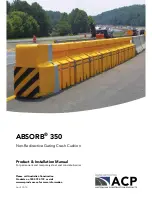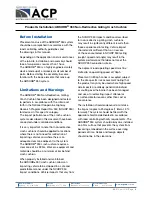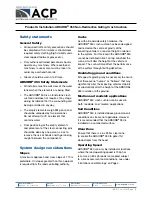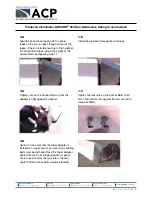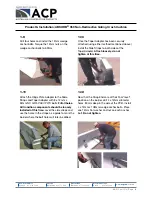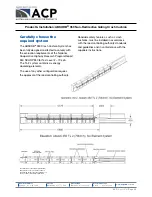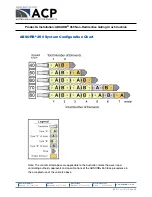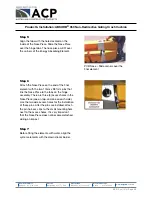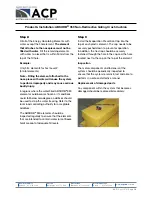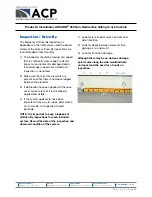
New South Wales
Sydney
02 8708 4400
Victoria
Melbourne
03 8773 5300
Queensland
Brisbane
07 3442 6200
Western Austalia
Perth
02 8708 4400
www.
acprod
.com.au
ACP
|
April 2016
|
Page
11
Product & Installation: ABSORB
®
350 Non-Redirective Gating Crash Cushion
TYPE B
TYPE A
TYPE B
TYPE A
NOSE PIECE
VENT / FILL HOLE
TWO VERTICAL INDENTATIONS
SINGLE VERTICAL INDENTATION
TRANSITION HARDWARE
PORTABLE OR PERMANENT BARRIER
THE ORIENTATION OF THE VERTICAL INDENTATIONS
AND THE VENT FILL HOLE MUST BE AS SHOWN IN
THIS DRAWING. REFER TO THE ABOVE DRAWING FOR
THE TYPE A AND TYPE B ELEMENT ORIENTATION
TYPE B
TYPE A
Carefully choose the
required system
The ABSORB
®
350 Crash Cushion System has
been fully designed and tested to comply with
the evaluation requirements of the National
Cooperative Highway Research Program Report
350 NCHRP 350 for Test Level 2 – 70 kph.
The TL-2 system contains six energy
absorbing elements.
The use of any other configuration requires
the approval of the road controlling authority.
Roadside safety features, such as crash
cushions, must be installed in accordance
with the road controlling authority standards
and guidelines and in conformance with the
suppliers instructions.

